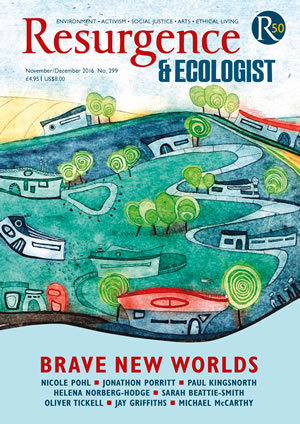Quentin Blake’s scratchy drawings of people and birds and animals and monsters are etched into my brain. I grew up with these strange, magical characters, as did millions of others, thanks to Blake’s long collaboration with Roald Dahl. Returning to his work via Ghislaine Kenyon’s new book, I experienced a happy sense of reconnecting with a part of myself.
But this book is more than a simple trip down memory lane. It seeks to describe the man by taking a detailed look at his art, and to find within this relationship a positive story about the human condition. This is an inspiring book with a serious message, encapsulated in the title of the second section: “Why the art of Quentin Blake can make you feel better.”
Art dominates the narrative, which rests on thoughtful descriptions of Blake’s drawings, many of which are reproduced as beautiful colour plates. Having only encountered Blake on the pages of Roald Dahl, I was fascinated by the range and depth of his less famous work, ranging from the “sophisticated, sexy, witty and intellectual” pictures that formed the Nos Compagnons exhibition at the Paris Galerie Martine Gossieaux in 2014, to a picture of a girl riding a llama, emblazoned on a bus that delivers books to children in remote parts of Ecuador. The effect is of taking a journey through pictures, in the company of a man who ultimately remains largely hidden “behind the thick screen that protects his personal life”.
In this age of vacuous celebrity and social media oversharing it is refreshing to get to know somebody through six decades of brilliant drawings, rather than photographs of what they had for lunch. Yet given that she has known Blake for nearly two decades, Kenyon’s descriptions of him are often frustratingly vague and conjectural.
It becomes increasingly clear that the empathy displayed in Blake’s drawings did not come from direct experience. He has never had children, despite being the most successful of children’s illustrators. He has rarely spent time in hospital and yet is still able to come up with artwork for hospital wards that successfully deals with subjects ranging from infant death to severe eating disorders.
The book ends with three pages of text by Blake. In the final paragraph he confronts head-on the mysterious love triangle of life, art and imagination: “There was a set of coloured drawings of the heads of women otherwise submerged in water. I’m not sure what the significance of those is…but swimming…has been happening in my pictures over a number of years.”
Reading this book felt to me like swimming, or, indeed, watching a play. I was submerged, without always being sure what the significance was. But I’m glad it happened. Like swimming, and playing, it made me feel better.







